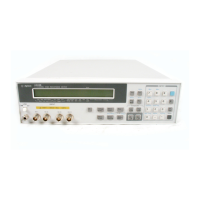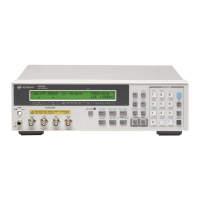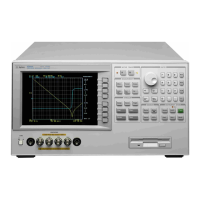Agilent 4155B/4156B User’s Guide Vol.2, Edition 5 4-9
Making a Measurement
Connecting DUT
Kelvin Connection
Kelvin connections give good measurement results when you force high-current.
The following figure shows the equivalent circuits for Kelvin and non-Kelvin
connections.
• For the non-Kelvin connection, the voltmeter measures the voltage drop of
resistances r
F1
, R
DUT
, and r
F2
.
• For the Kelvin connection, the voltmeter measures the voltage drop of resistance
R
DUT
only. The impedance of the voltmeter is very high, so the voltage drop of
resistances r
S1
and r
S2
can be ignored.
The Kelvin connection is effective even when forcing voltage. The voltage drop due
to the residual resistance of the force line wiring is fed back to the voltage source via
a comparator in the sense line. The input impedance of comparator is high, and
current flow into the sense line is very low. So output error is not significant if the
sense line wiring has a residual resistance of 10 W or less. Therefore, the specified
voltage appears at the sense point (point where sense line contacts force line)
(a) non-Kelvin connection
(b) Kelvin connection
r
F1
r
F2
R
DUT
r
S2
r
S1
V
V V
r
F1
r
F2
R
DUT

